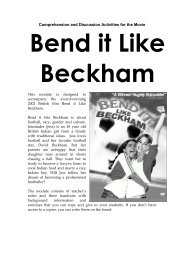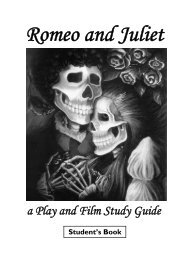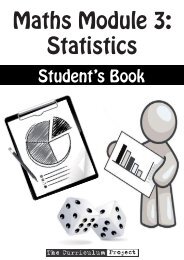General English Pre-Intermediate Modules 1-4 Teacher's Guide (2.1 ...
General English Pre-Intermediate Modules 1-4 Teacher's Guide (2.1 ...
General English Pre-Intermediate Modules 1-4 Teacher's Guide (2.1 ...
Create successful ePaper yourself
Turn your PDF publications into a flip-book with our unique Google optimized e-Paper software.
C. Look at the picture and discuss it. What is happening (an informal introduction)<br />
Brainstorm possible replies. Look at the four replies. Which ones are appropriate Elicit suggestions.<br />
Answer:<br />
It would be best to say ‘Hi Jane’ or ‘Pleased to meet you,’ or both of them together: ‘Hi Jane.<br />
Pleased to meet you.’ You could say ‘How do you do’ but it is not common in modern <strong>English</strong><br />
except in very formal situations. Also, we do not normally say ‘How are you’ when meeting<br />
someone for the first time. We say it when we see someone who we already know.<br />
1.4 Introducing other people<br />
This section is about introducing other people. When you introduce someone, it is good to provide some<br />
interesting information about them.<br />
A. Play audio 1.3. Students decide what information is being provided.<br />
Answers:<br />
a. name and organisation<br />
b. name and family<br />
c. name and job<br />
d. name, family and hobbies<br />
e. name and country<br />
Brainstorm suggestions for other useful information you can provide, e.g.<br />
an achievement: ‘This is Jenny. She just graduated from university.’<br />
their future plans: ‘Meet Sai Htoo. He’s going to get married next month.’<br />
their past: ‘This is William Shakespeare. He wrote Romeo and Juliet.’<br />
The best information is information that other people will find interesting.<br />
B. Roleplay. In groups of three, students practise introducing each other formally and informally.<br />
After they have spent some time practising, get each group to perform one introduction to the class.<br />
The class can vote on the best introduction.<br />
2. The <strong>Pre</strong>sent Simple<br />
This section reviews the present simple tense, positive and negative forms, in its most common uses:<br />
• talking about repeated activities<br />
• talking about things that are true for a long time<br />
<strong>2.1</strong> Love and marriage<br />
A. Ask the class why people get married, e.g. love, money, not to be lonely, to have a family, etc.<br />
Write their ideas on the board.<br />
B. In groups, students brainstorm free time activities. Get them to think of lists of free time activities<br />
that use these verbs, e.g.<br />
listen to… music, the radio, cassettes<br />
read… books, newspapers, magazines<br />
play… football, chess, volleyball<br />
watch… videos, television, football<br />
visit… friends, relatives<br />
go… to the cinema, swimming, to the market, etc.<br />
C. <strong>Pre</strong>-teach important, to work hard, to spend (money), band, boring, alcohol, fashionable, to organise,<br />
to invite, teashop.<br />
Students read about the women. Clarify anything they don’t understand.<br />
Module 1<br />
3



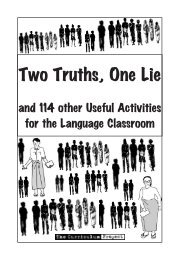
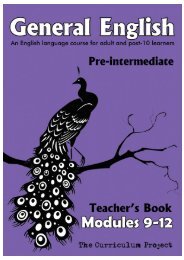


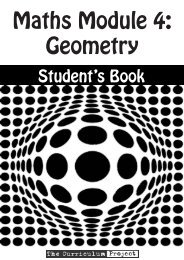

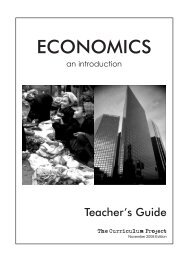
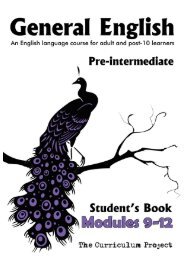

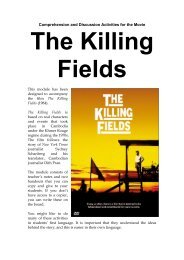
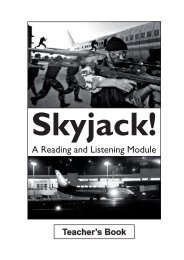
![[Eng] Nov 2012 DRAFT - The Curriculum Project](https://img.yumpu.com/45590859/1/184x260/eng-nov-2012-draft-the-curriculum-project.jpg?quality=85)
